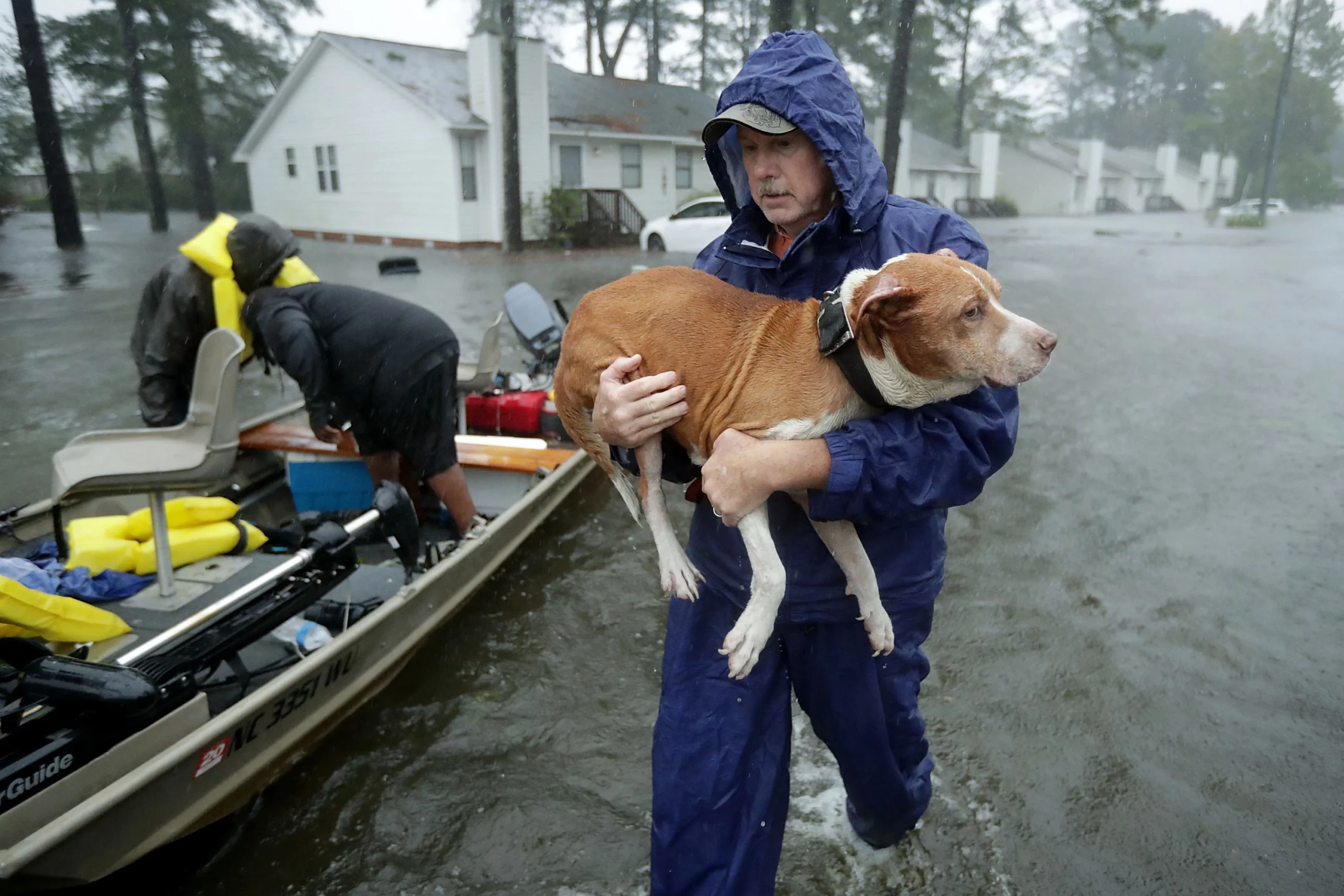If you’ve been following media coverage of the post-hurricane flooding in Texas during the last couple of weeks, you will have seen many images and accounts of people evacuating with their pets.
You will no doubt also have seen emergency responders and volunteers rescuing abandoned pets and stranded horses and livestock. Similar stories play out during all types of natural disasters, whether they’re floods, cyclones, or bushfires.
An estimated 63% of Australian households have at least one pet – one of the highest rates of pet ownership in the world – and including those pets in your emergency plan can be vital.
Last week a New South Wales coronial inquest into the 2015 Hunter Valley floods heard that an elderly resident who drowned refused to leave her home without her dog and bird, prompting parliamentary questions to the NSW minister for emergency services over provisions for animals in emergencies.
If you’ve been following media coverage of the post-hurricane flooding in Texas during the last couple of weeks, you will have seen many images and accounts of people evacuating with their pets.
You will no doubt also have seen emergency responders and volunteers rescuing abandoned pets and stranded horses and livestock. Similar stories play out during all types of natural disasters, whether they’re floods, cyclones, or bushfires.
An estimated 63% of Australian households have at least one pet – one of the highest rates of pet ownership in the world – and including those pets in your emergency plan can be vital.
Last week a New South Wales coronial inquest into the 2015 Hunter Valley floods heard that an elderly resident who drowned refused to leave her home without her dog and bird, prompting parliamentary questions to the NSW minister for emergency services over provisions for animals in emergencies.
So if you have animals, what can you do to protect them? The first thing to do is check general resources on emergency plans. Unfortunately there is no Australia-wide emergency response approach, so it’s important to make plans that are suited to your own situation and the help you have available.
Here are my top tips for taking care of your animals in an emergency:
- It sounds obvious, but creating an emergency plan that includes pets is the first step. If you don’t have a household plan, the Australian Red Cross Rediplan is a good place to start. Consider a range of potential emergencies in your planning: heatwaves, prolonged loss of power, floods, cyclones and bushfires. Most importantly, think about every creature in your household: our research suggests that chooks are popular but often not considered when it comes to emergency planning.
- Plan to leave early. Evacuating with animals can take longer, especially when you have multiple types of animals or need to make multiple journeys. Don’t plan to leave animals behind, or plan to leave a household member behind to take care of the animals. Stay aware of weather conditions and emergency warnings.
- Have an emergency kit for your animals: fill a “go bag” (or box) with items you’ll need if you need to leave in a hurry. If you have essentials you can’t afford to leave in a box, make a checklist and know where they are. There are some excellent checklists available online to get you started.
- Plan where you will take your animals. Emergency services can’t help evacuate your pets or larger animals in emergency situations, and not all evacuation centres will accept them. The official position is that your animals are your responsibility, so you need to know where you’ll take your animals and how you’ll get them there. Most people rely on taking them to friends or family, but this can sometimes mean that different animals need to go to different places.
- Plan for what will happen if you’re not at home, or can’t get back home. No one likes considering this situation, but it is often a reality. Speak to neighbours or nearby friends about what you would like them to do if you’re not home (and offer them your support if they’re away). Make sure you have contact numbers for neighbours and those who might be able to help in these situations.
- If you have horses or other large animals, find a buddy. Horses, and other large pet livestock, are special cases in emergencies: their size means that there are additional challenges in their handling, loading, transportation, and relocation. Many equine groups have guidance for horse owners, and advocate buddy systems to help owners. There are also networking systems, such as Walking Forward Disaster Relief Team, that help horse owners prearrange safer places to relocate their animals ahead of emergencies.
- Hardest of all: practice your plan. Most emergency preparedness advice suggests that you practice your plan, but it’s particularly important with pets. It’s better to find out early that your ideal plan doesn’t work in practice. Finding work-arounds, and making a plan B and C, is far easier without the threat of imminent danger.
Remember, your animals depend on you. Plan for all the human and non-human animals in your household, and stay safe.
